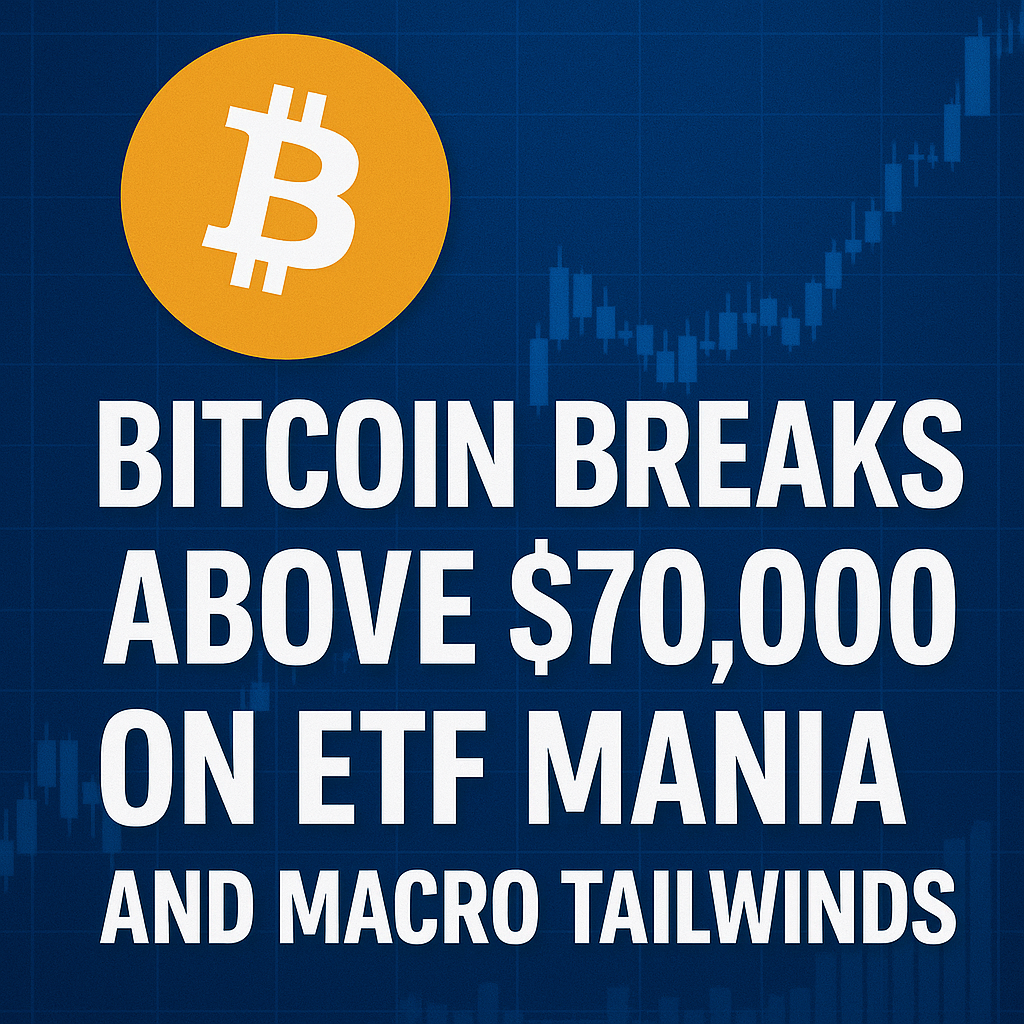Here are today’s top stories in crypto—concise, sourced, and geared for a daily update:
1. SEC Green-lights First Spot Ether ETFs, Paving Way for New Inflows
Summary: In a landmark decision, the U.S. Securities and Exchange Commission yesterday approved the first spot Ethereum exchange-traded funds, authorizing issuers including BlackRock, Fidelity and Grayscale to begin trading ETH-backed products as early as next week. The SEC concluded that these funds met custody and market-manipulation safeguards, reversing its long-held stance against spot-ETH vehicles. Analysts say the new ETFs could attract $5–10 billion in institutional capital within months, turbocharging demand for Ether and narrowing ETH’s discount to its futures market.
Why it matters: Approval signals the SEC’s growing comfort with mainstream crypto products beyond Bitcoin, potentially broadening the pool of regulated, “mainstream” investors in the world’s second-largest token. A surge in inflows may also tighten Ether liquidity and boost on-chain activity in DeFi and NFT sectors.
Source: Reuters / CoinDesk
2. Bitcoin Breaks Above $70,000 on ETF Mania and Macro Tailwinds
Summary: Bitcoin soared past $70,000 for the first time in history, adding over 15% in two trading days. Spot-Bitcoin ETFs, led by BlackRock’s IBIT and Fidelity’s FBTC, collectively amassed more than $2 billion in net new assets on Day 1, according to Bloomberg data. Meanwhile, dovish signals from the Federal Reserve and softer U.S. inflation prints have pushed real yields lower, reducing the opportunity cost of holding non-yielding assets like BTC.
Why it matters: New all-time highs underscore the synergy between regulated ETF products and macroeconomic conditions. Rising institutional flows are likely to dampen Bitcoin’s volatility over the medium term, even as retail traders pile in. Observers will be watching whether miners begin re-entering the spot market after months of selling to cover operating costs.
Source: Bloomberg / The Block
3. EU Finalizes MiCA Stablecoin Regime; Compliance Deadlines Loom
Summary: The European Parliament and Council reached final agreement on the Markets in Crypto-Assets (MiCA) framework, setting stricter rules for stablecoin issuers, market-makers and wallets. Under the deal, “asset-referenced tokens” and e-money tokens must hold 1:1 reserves in high-quality liquid assets and submit to ECB oversight. Phase-in begins in mid-2024, with full compliance required by mid-2025. Non-compliant entities face fines up to 5% of global turnover.
Why it matters: MiCA will be the world’s first unified, bloc-wide crypto rulebook. By clarifying legal obligations, it paves the way for mainstream adoption of stablecoins in payments and DeFi across EU member states. However, smaller issuers warn the regime’s capital and reporting requirements could force consolidation, potentially favoring incumbents and large token issuers.
Source: The Block / CoinTelegraph
4. Binance Faces CFTC Suit Alleging Unregistered Derivatives Trading
Summary: The U.S. Commodity Futures Trading Commission filed a civil enforcement action against Binance and its CEO Changpeng Zhao, accusing them of operating an unregistered exchange for derivatives and commodities. The suit alleges that Binance allowed U.S. customers to trade perpetual swaps and options without CFTC authorization, and that it misled regulators about its AML/KYC controls. The CFTC is seeking penalties, disgorgement of profits and a trading ban in the U.S.
Why it matters: This is the CFTC’s most aggressive crypto enforcement to date, targeting the industry’s largest exchange by volume. A ruling against Binance could reshape global derivatives markets, forcing U.S. users to migrate to regulated venues like CME and potentially prompting other nations to rethink their own oversight of offshore platforms.
Source: CoinTelegraph / Wall Street Journal

